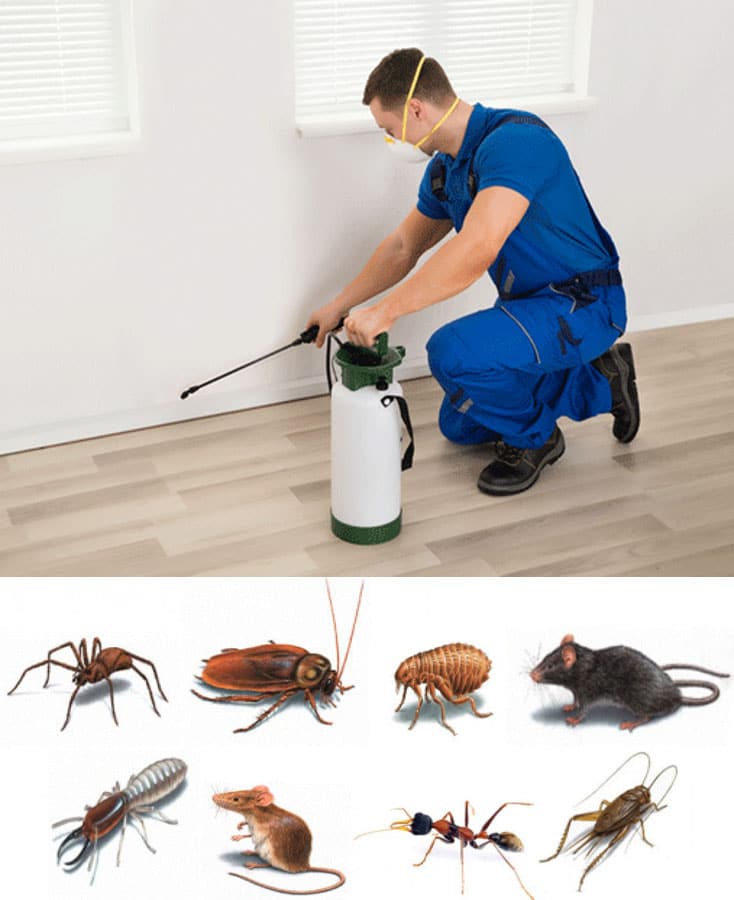Bed Pest Therapy Breakdown: Contrasting Chemical Vs. Non-Chemical Solutions
In the realm of pest control, particularly when taking care of the relentless issue of bed pests, the option in between chemical and non-chemical therapy options can be a pivotal one. Both techniques offer distinct advantages and disadvantages, affecting factors such as performance, safety and security factors to consider, and total cost. By examining the nuanced information of each approach, a more clear understanding of which path to pursue in attending to a bed insect infestation can be obtained.
Efficiency of Chemical Therapies
Chemical therapies for bed bug invasions have been commonly acknowledged for their powerful and quick efficiency in eliminating these insects. When considering the efficiency of chemical treatments, it is crucial to understand that they can offer a quick and detailed solution to a bed bug problem. Professional pest control specialists typically count on pesticides to target bed insects at different stages of their life cycle, consisting of fairies, adults, and eggs. These chemicals generally work by interrupting the bed insects' anxious system, resulting in paralysis and eventual death.
In addition, chemical treatments have the benefit of supplying residual results, implying that they can continue to remove bed insects even after the preliminary application. This recurring action is specifically helpful in combating any possible re-infestations. In addition, the fast activity of chemical treatments can bring relief to people dealing with severe bed insect problems, allowing them to gain back control of their living spaces swiftly.
Safety Worry About Chemical Solutions
One important aspect that requires cautious factor to consider when making use of chemical solutions for bed bug therapy is guaranteeing the safety and security of residents and the environment. Direct exposure to specific chemicals made use of in bed pest therapies can lead to breathing problems, skin irritation, or various other negative responses, particularly in people with pre-existing problems or level of sensitivities.
Additionally, the environmental impact of chemical services is one more substantial factor to consider. Some chemicals made use of in bed insect therapies may be damaging to useful pests, wildlife, and ecological communities if they leach right into the soil or water supply. It is important to make use of chemical therapies deliberately, complying with safety and security guidelines, and taking into consideration less harmful choices to mitigate these dangers and ensure the safe and reliable administration of bed pest invasions.
Advantages of Non-Chemical Strategies
Taking into consideration the possible security issues and environmental impact linked with chemical services for bed bug treatment, exploring non-chemical approaches provides a promising choice with numerous unique benefits. Non-chemical therapies are ecologically friendly, as they do not add to air or water air pollution, making them a lasting choice for bug control.
In addition, non-chemical solutions can be efficient in targeting bed insects, including hard-to-reach areas where chemical treatments might not permeate. Methods such as warm treatment, vacuuming, steam cleansing, and mattress encasements provide complete removal without making use of damaging chemicals. Furthermore, non-chemical approaches can be much less disruptive, requiring very little prep work and allowing for quicker reentry right into treated locations. In general, going with non-chemical bed pest treatment approaches not only prioritizes safety and environmental protection but additionally makes sure effective and detailed pest control.
Limitations of Non-Chemical Treatments

Furthermore, non-chemical therapies typically call for several applications to accomplish effective obliteration. This can be time-consuming and may not always find out this here guarantee total elimination of all bed pests and their eggs, particularly in surprise or hard-to-reach locations.
Moreover, the success of non-chemical therapies greatly counts on proper implementation and thoroughness, which can be challenging for individuals without professional know-how. Insufficient application of non-chemical approaches might cause insufficient removal, resulting in consistent infestations and the need for extra treatments.
For that reason, while non-chemical treatments have their advantages, it is important to recognize these constraints and consider them when identifying the most reliable strategy for managing bed pest infestations.
Expense Comparison: Chemical Vs. Non-Chemical Options
Given the restrictions related to non-chemical therapies, a vital element to examine in the context of bed pest management is the expense comparison in between chemical and non-chemical alternatives. Chemical treatments generally entail the application of insecticides by professionals, which can vary from $250 to $900 per space, depending upon the seriousness of the problem and the size of the location to be dealt with. On the other hand, non-chemical treatments like warm therapy or steam can be extra expensive, with expenses ranging from $1,000 to $6,000 for an entire home. While the initial price of chemical therapies might seem reduced, numerous treatments may be required to totally get rid of the problem, possibly enhancing the overall expense. On the various other hand, non-chemical options may offer an extra lasting and green solution, although they can be cost-prohibitive for some individuals. Eventually, when thinking about the expense of bed bug treatment alternatives, it is necessary to consider the in advance expenditures against the efficiency and long-term sustainability of the chosen technique.
Verdict

Taking into consideration the potential safety problems and environmental impact connected with chemical services for bed insect treatment, exploring non-chemical approaches presents an appealing choice with several unique advantages.Offered the limitations associated with non-chemical treatments, a necessary aspect to examine in the context of bed pest monitoring is the cost contrast between chemical and non-chemical options. In contrast, non-chemical therapies like heat treatment or steam can be what does an exterminator do more expensive, with expenses ranging from $1,000 to $6,000 for an entire home. While the first price of chemical therapies might appear reduced, numerous therapies might be called for to totally eradicate the invasion, possibly boosting the general expense.In final thought, when contrasting chemical and non-chemical bed pest therapy alternatives, it is important to consider effectiveness, safety, advantages, limitations, and expense.